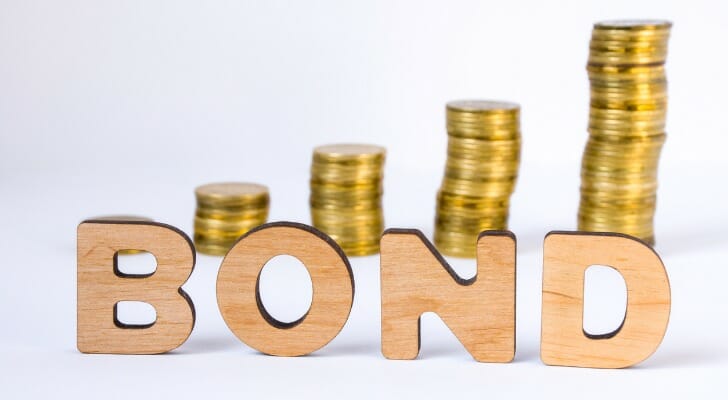
Recently I received a question from a reader asking:
“Should I invest some of my money in bonds or is it OK to put everything in dividend growth stocks?”
If you’re a frequent reader of this site, you understand that I am a dividend growth investor at heart. I love researching, reading, discussing and investing in dividend growth stocks. Dividend growth investing is the strategy that I believe offers investors the best chance for long term wealth and success.
But does that mean that I think all of our money should be invested in only dividend growth stocks?
My answer is NO.
Yes I’m a big believer in dividend growth investing. But I’m also a big believer in diversification. Not only diversification by investing in many different companies in many different industries. But also diversification by investing in different asset classes. These asset classes could be anything from stocks, bonds and real estate. Diversification is important because it helps keep our financial house secure and safe.
So the short answer is Yes, I believe you should invest some of your money in bonds.

How Much Should I Invest in Bonds?
I’ve already expressed my belief that dividend growth investing is the best strategy for building long term wealth. So obviously I’m not going to sit here and tell you to invest a large portion of your wealth in bonds.
It is my opinion that the majority of your wealth should be invested in those dividend growth companies that will continue to pay you a passive income that annually increases at a pace faster than inflation. I’m talking about the Johnson & Johnson’s, the Coca-Cola’s and the Wal-Mart’s. There are tons of great companies that will help you grow your wealth.
But, stocks fluctuate in value. Occasionally the economy hits a hiccup and stock values go down. This isn’t much a problem for dividend growth investors as I rarely recommend selling and you should mostly be concerned with your income stream. The problem is that sometimes, some of those companies we own will be forced to cut or eliminate their dividend payments.
So I advise keeping a small portion of your money invested in bonds. The interest you receive from your bonds will be reliable even during those rough economic climates.
But how much exactly should you invest in bonds? Well it all depends what you are comfortable with.
Personally, I keep no more than 10% of my money invested in bonds. I want the stability of bonds for part of my wealth. But the bulk of my wealth (at least 90%) I want invested in dividend growth stocks so that it continues to grow and grow towards my goals of financial independence.
Where to Invest in Bonds
There are two areas of personal finance where I use bonds to help grow my money.
The first is my emergency fund. I keep at least 6 months worth of income in savings in case of financial troubles. I want an emergency fund in case I lose my job and thus my income. I want an emergency fund in case I have large unexpected expenses pop up such as major housing issues or car repairs.
At first, I was happy keeping my emergency savings in an online savings account. I used ING Direct (now Capital One 360) and was earning over 4% in interest. But then interest rates dropped and I began earning very little (less than 0.75%) on my money that was sitting in the savings account.
So I began looking for other options. And I found one that I liked.
I found Series I U.S. Treasury Savings Bonds.
Series I Bonds are a savings vehicle meant to help protect your savings against inflation. They earn an interest rate that is a combination of a fixed rate and an inflation component. I bonds can be purchased from Treasury Direct. You can invest a minimum of $25 all the way up to an annual maximum of $10,000 into Series I Bonds.
The Series I Bonds are meant to be long term investments. They have a 30 year time frame. However, you can cash them in anytime after one year. If you cash them in before 5 years, you lose the last 3 months worth of interest.
For me, this made Series I Bonds seem like the perfect option for part of my emergency fund. I could invest a portion of my emergency fund in Series I Bonds which were and currently are earning a higher interest rate than my online savings account pays.
So I keep a portion (half) of my emergency fund in U.S. Government Series I Treasury Bonds.
The other area where I own bonds is in my general investment portfolio. I personally try to keep at most 10% of my investment portfolio in bonds.
But I’m no bond investing expert. I don’t have the time nor interest to research and analyze individual bonds. I prefer to spend my time researching dividend growth stocks (much more interesting in my opinion!).
So I invest in bonds through low-cost bond mutual funds.
There are a variety of funds available to consider. You can invest in bond funds that specialize in government bonds. You can find bond funds that specialize in muni bonds. You can purchase bond funds that invest in quality corporate debt or others that invest in junk bonds (higher risk). You can also find international bond funds. Whatever suits your fancy, you can probably find it. Each different type of bond fund will have different risks and interest rates so make sure to do your research.
To keep it simple, I like two different bond funds from Vanguard.
Vanguard Total Bond Market Index Fund holds more than 5,000 domestic investment-grade bonds. This fund has an allocation of around 30% corporate bonds and 70% U.S. Government Bonds. The fund has a low expense rate of 0.08% and fairly low risk profile. Due to the lower risk, the fund has a yield around 2.09%.
Vanguard Total International Bond Index Fund holds nearly 2,000 non-U.S. bonds. This fund invests in international government and corporate bonds. They have a slightly higher expense rate of 0.2% but still a fairly low risk profile. This fund has a yield around 1.36%.
As you can see, the yields are pretty low but so is the risk. I’m not necessarily recommending these funds for you to invest in. These are what I use. They give me exposure to the bond market with very little thinking/work on my part.
Also, because of the low yields, I invest a very small portion of my portfolio in bond funds (currently less than 10% of my portfolio). I don’t believe bonds are the way to reach financial independence. They can supplement and give you some diversification.
But the bulk of your investing should be done in dividend growth companies. These companies are the ones that will grow your income faster than inflation. These companies are the ones increasing in value because they are growing their net profits over time. These companies will help you reach financial independence.
What do you think? Do you invest in bonds? Or do you strictly stick with the dividend growth stocks?
